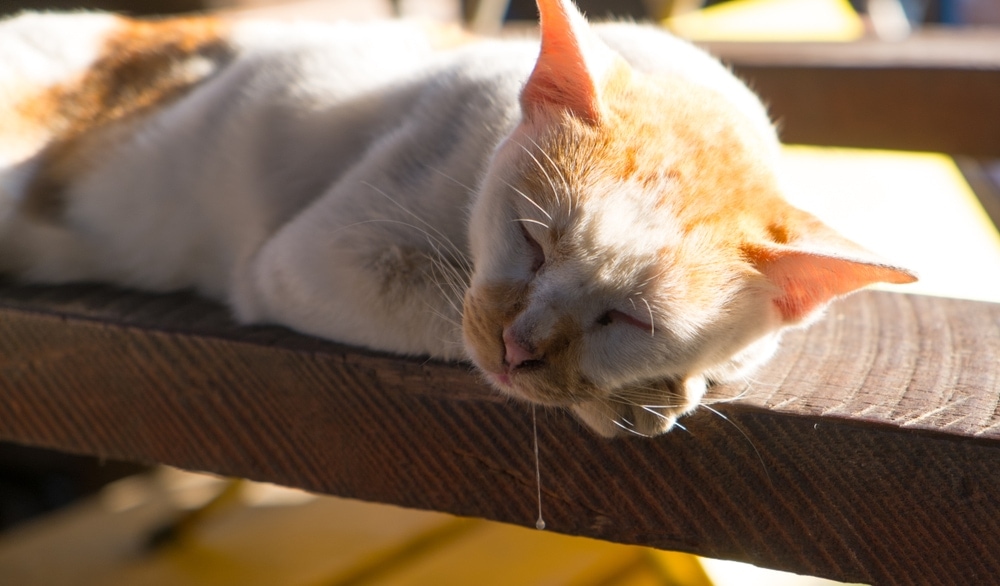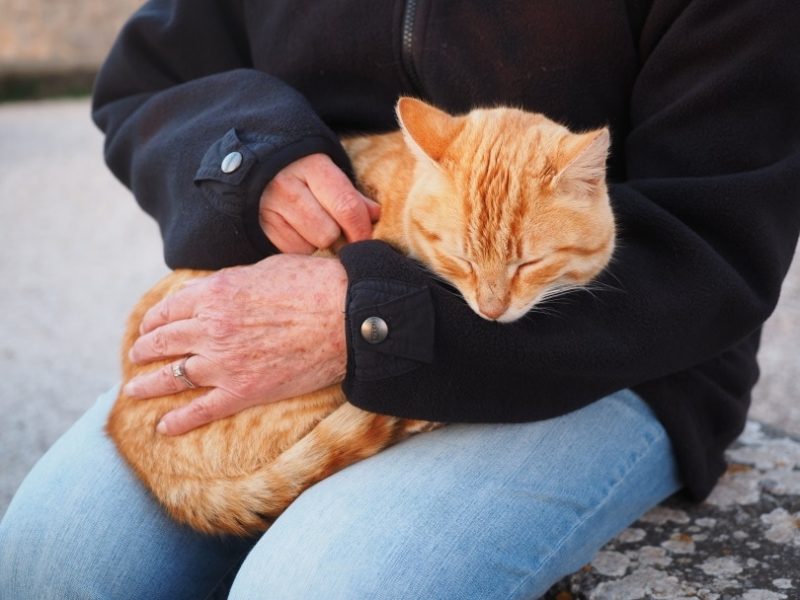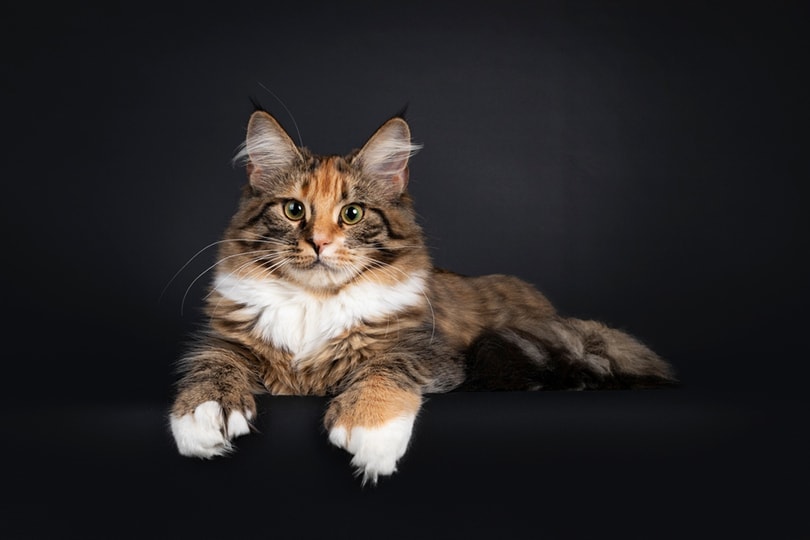Can Cats Eat Beggin’ Strips? What You Need To Know!

Updated on
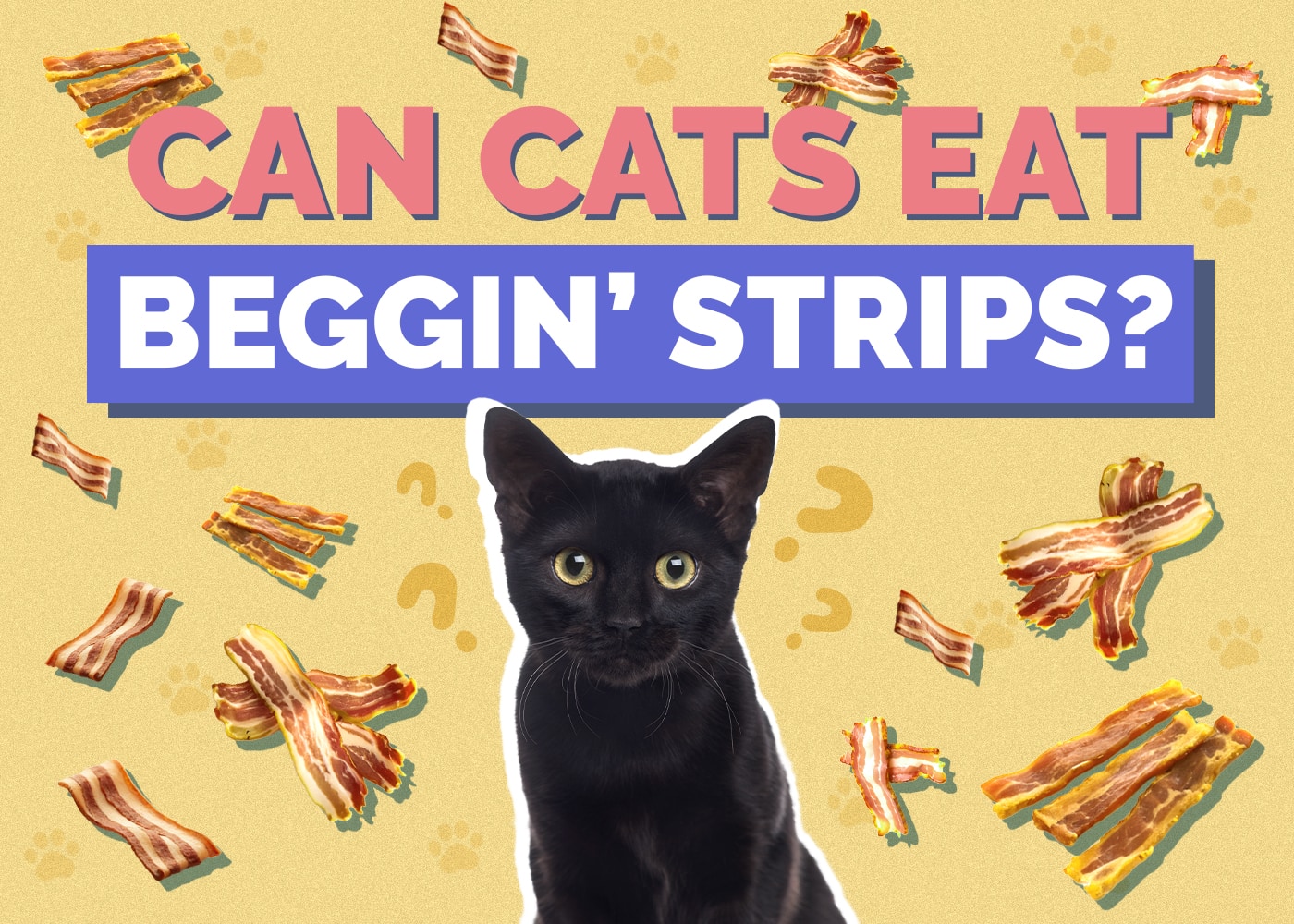
If you own both dogs and cats, you might find your pets coveting each other’s treats. Many dog treats, like Beggin’ Strips, might be tempting to your cat. But before you start sharing, think twice—Beggin’ Strips aren’t the best treat for your cat. Beggin’ Strips won’t poison cats, but they might have both short-term and long-term health consequences. Although cats and dogs can share treats, Beggin’ Strips aren’t the best choice.
What Are Beggin’ Strips?
Beggin’ Strips are a line of dog treats made to look and taste like bacon. These treats use a mixture of pork, bacon fat, and fillers like corn and barley to make a bacon substitute for dogs. Beggin’ Strips also come in additional flavors and types. Although many dogs love Beggin’ Strips, they’ve been criticized for unhealthy ingredients like bacon grease and BHA.
Why are Beggin’ Strips Bad for Cats?
Beggin’ Strips might taste and smell good to cats, but they aren’t the best choice for a treat for a few reasons. First, Beggin’ Strips are hard to digest. Bacon isn’t the healthiest meat for cats or dogs, and many cats will get gastrointestinal upset such as diarrhea from eating bacon-heavy meals like Beggin’ Strips. The high fat content in Beggin’ Strips is also less-than-healthy for cats and can predispose them to serious conditions such as pancreatitis.
Cats get most of their energy from protein and can’t process fat very well. Although cats should have some fat in their diet, they should get their fat content mainly from their daily food, not fatty treats. A third but significant concern about Beggin’ Strips is that they use butylated hydroxyanisole (BHA) as a preservative, which has been linked to cancer in both cats and dogs.
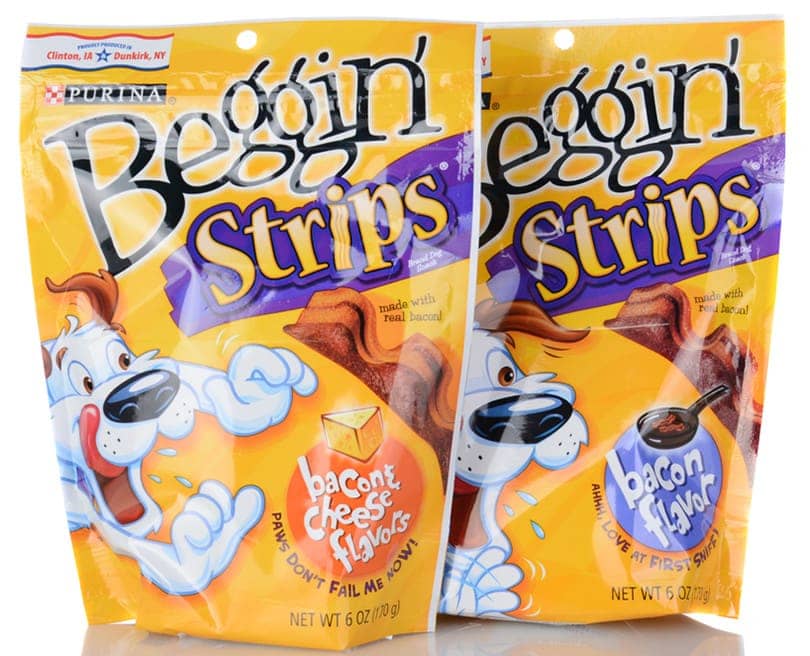
Beggin’ Strips and BHA
One of the major criticisms of Beggin’ Strips is that it contains BHA. BHA is a preservative used to stop some kinds of pet food from spoiling. In Beggin’ Strips, it’s used to preserve the bacon grease that gives them their flavor.
The problem with BHA is that it’s connected to a range of health problems. It’s a carcinogen, meaning that it causes higher rates of cancer. It’s also been connected to liver and kidney damage in rats. The BHA in Beggin’ Strips is unhealthy for cats and dogs, but it’s especially dangerous to cats and smaller dogs because of its small size and lower nutritional needs.
Over the long term, eating BHA-filled foods is harmful to pets’ health.
Should I Feed My Cat Bacon?
Although cats might be interested in bacon, it’s not the best treat for your cat—at least, not more than an occasional nibble. Bacon is cured meat that usually has a high fat and salt content—both things that cats don’t process as well as humans. An excess of fat and sodium can cause health problems for your kitty. Eating too much bacon can cause diarrhea, obesity, and in some cases, sodium poisoning. Although a nibble of bacon is usually okay for a cat, it isn’t the healthiest treat.
So, if you’re looking for something you can feed both your dog and your cat, you might want to look to more natural options that both species can enjoy. In multi-pet households, it’s important to know a little bit about the nutritional needs of both animals.
Cat vs Dog Nutrition
Cats are obligate carnivores—this means that they get most of their nutrition from meat in the wild and need vitamins that aren’t found in plants, like taurine. Although some cats might eat a small amount of plant matter, cats can’t gain significant nutrition from plants and don’t process carbs in the same way that humans do. They gain most of their energy from protein, as well as some energy from fats.
Dogs are scavenging carnivores. This means that, like cats, they prefer to eat meat where available, and a healthy diet is mainly meat. But dogs are a step closer to omnivorous than cats are. They can process many plants and don’t need as much protein to fuel them. They also can make their own taurine and have fewer vitamin needs than cats. This means that many dog foods and treats contain plant matter cats can’t digest, while many cat treats are full of types of proteins and fats that are hard on dogs’ digestive systems.
Now that you know what you can safely feed your cat, it’s just as important to find a bowl that supports their health and well-being. With whisker-friendly bowls and a wide tray to catch any spills, our Hepper NomNom Cat Bowl is our favorite option.
Best Multi-Pet Treats
So, if cats and dogs have different nutritional needs, are there any treats they can share? Don’t worry! There are a few they are share. The best treat for sharing is healthy meat. Both dogs and cats can eat uncured meats like chicken, turkey, or beef. You can feed them cooked meat or buy freeze-dried 100% meat treats for your cat or dog. You can also feed your pets cooked eggs as another source of yummy protein.
Just remember that whatever treats you feed your pet, you don’t want to give them too much. Overfeeding is a problem no matter how healthy the treat is. These treats aren’t quite as easy as Beggin’ Strips, but they are full of good nutrients and have no harmful ingredients.
Related Reads:
Featured Image Credit: TonelsonProductions, Shutterstock




